Understanding Teeth Whitening Strips
Teeth whitening strips have revolutionized the way people approach at-home teeth whitening. They offer a convenient, affordable, and relatively easy way to achieve a brighter smile. Understanding how these strips work, the different types available, and how to apply them correctly is crucial for achieving the best results and minimizing potential side effects. This guide will walk you through everything you need to know about using teeth whitening strips effectively and safely, helping you gain a dazzling smile.
What are Teeth Whitening Strips
Teeth whitening strips are thin, flexible strips coated with a peroxide-based whitening agent, typically hydrogen peroxide or carbamide peroxide. These strips are designed to adhere to the surface of your teeth, allowing the whitening agent to come into direct contact with the enamel. They are usually made of a flexible plastic material that conforms to the shape of your teeth, ensuring good contact for effective whitening. The concentration of the whitening agent varies among different brands and products, so it’s important to choose one that suits your needs and sensitivity levels.
How Do Whitening Strips Work

The primary mechanism of action for teeth whitening strips involves the oxidation of stains on the tooth enamel. The peroxide-based whitening agent penetrates the enamel and breaks down the stain molecules, making them less visible and effectively lightening the teeth. The process is similar to what happens in professional teeth whitening treatments, but with a lower concentration of the active ingredient for use at home. The effectiveness of the whitening depends on the concentration of the whitening agent, the duration of application, and the type of stains present on the teeth. Consistent use, as directed, typically yields noticeable results over a few weeks.
Choosing the Right Whitening Strips
With numerous brands and formulations available, choosing the right whitening strips can seem daunting. Several factors influence the selection process. Considering the concentration of the whitening agent, the recommended application time, and the presence of any added features is essential. Individuals with sensitive teeth should opt for strips with lower concentrations of peroxide to minimize discomfort. It’s also important to consider the brand’s reputation, reviews from other users, and any specific features or benefits they offer.
Considerations Before Use
Before starting any teeth whitening treatment, it’s essential to assess your oral health. Whitening strips are most effective on natural teeth and might not work on crowns, fillings, or veneers. People with pre-existing dental issues, such as cavities or gum disease, should consult their dentist before use. A professional dental cleaning is recommended before starting the whitening process to remove any surface stains that may hinder the whitening agent’s effectiveness. It is important to follow all the manufacturer’s instructions and avoid using the product more frequently than directed.
Types of Whitening Strips
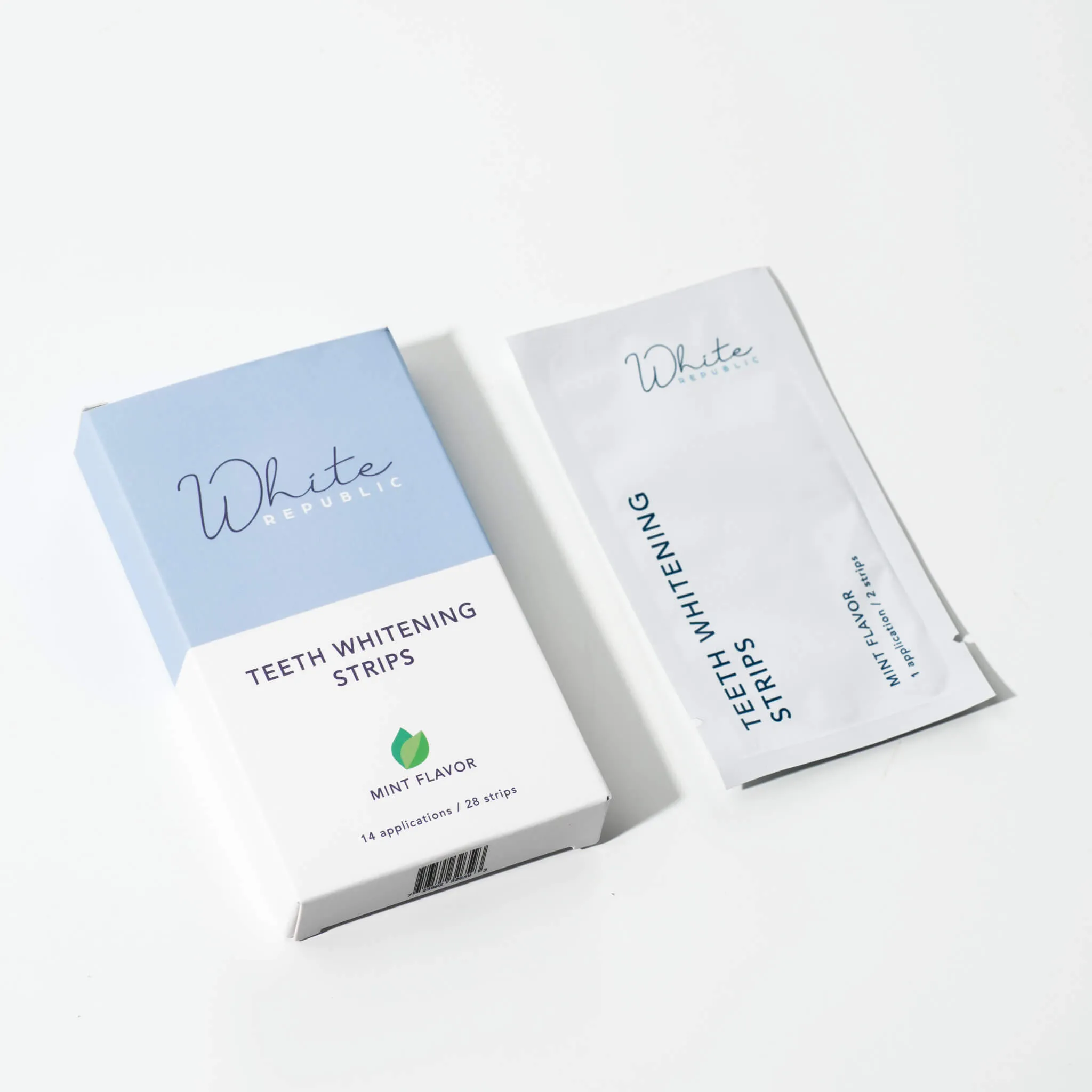
The market offers different types of whitening strips, varying in concentration, application time, and additional features. Some strips are designed for daily use, while others are for shorter, more intensive treatments. There are also specialized strips for sensitive teeth, containing lower concentrations of peroxide. Some brands may offer strips that focus on the front teeth only, while others provide strips for both the upper and lower arches. Some strips might contain additional ingredients to help reduce sensitivity or enhance the whitening effect. Researching and selecting the product type that best matches your needs and preferences is crucial.
Step-by-Step Application Guide
Applying teeth whitening strips correctly is critical to achieving optimal results. Proper application ensures that the whitening agent is in direct contact with the teeth and that you avoid any unwanted side effects. This step-by-step guide provides a comprehensive overview of the entire process, from preparing your teeth to after-care instructions.
Preparing Your Teeth
Before applying the strips, brush your teeth gently to remove any food particles or debris. However, avoid brushing immediately before application, as this might irritate your gums. Floss your teeth to ensure that the strips can reach all surfaces. After brushing, dry your teeth with a clean cloth or paper towel to help the strips adhere better. Ensure your teeth are completely dry before applying the strips to maximize their effectiveness. Avoid eating or drinking anything except water before applying the strips.
Applying the Strips
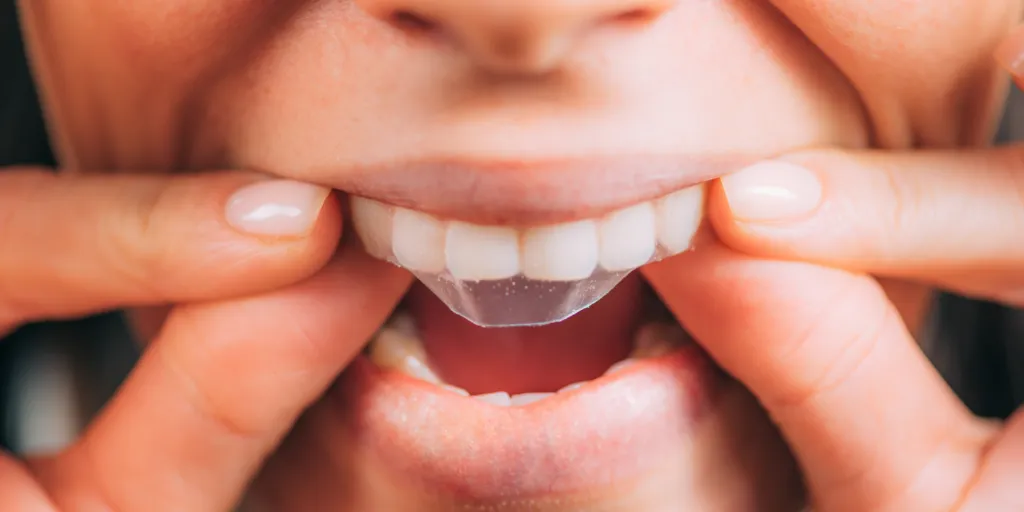
Carefully peel the strips from their backing. The strips are usually designed for upper and lower teeth separately. Apply the longer strip to your upper teeth and the shorter strip to your lower teeth. Align the strips with your gum line, ensuring they cover the visible surface of your teeth. Gently press the strips onto your teeth, making sure they adhere securely. Avoid touching your gums as the whitening agent can cause irritation. Ensure the strips cover all the teeth you wish to whiten.
Proper Placement Technique
Proper placement is essential for effective whitening. Align the strip with your gum line, pressing gently but firmly to ensure good contact. If the strip is too long, you can fold the excess portion behind the teeth. Avoid overlapping the strips, as this can cause uneven whitening and irritation. Make sure the strips cover the front surfaces of your teeth for the best results. Proper placement ensures that the whitening agent reaches the areas where stains are most apparent.
Ensuring Full Coverage
To achieve full coverage, ensure that the strips reach all visible teeth. Some strips are designed to wrap around the teeth, reaching the back surfaces. If your teeth are not fully covered, the whitening effect will be uneven. Use your finger to press the strips firmly against the teeth, especially in areas where they may not be adhering well. Proper coverage guarantees that the whitening agent is applied to all the stained areas, giving you a consistent and radiant smile.
Timing and Duration
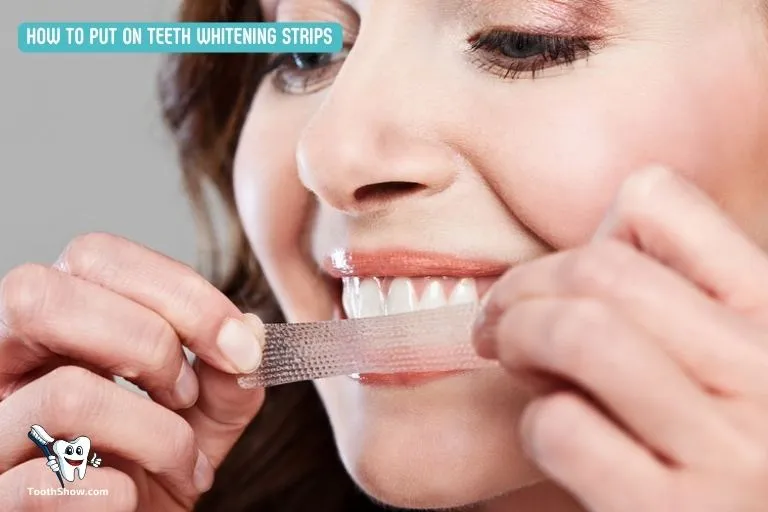
The recommended application time varies by product. Always follow the instructions on the packaging. Generally, most strips are applied for 30 minutes to an hour, once or twice a day. Setting a timer can help you keep track of the application time. Exceeding the recommended time can increase the risk of sensitivity and irritation. Consistent use over several days or weeks is usually necessary to achieve the desired whitening effect. Do not leave the strips on for longer than the recommended time to avoid potential side effects.
After Application Care
Proper after-care is crucial for ensuring the best results and minimizing side effects. This involves carefully removing the strips, rinsing your mouth, and considering any necessary post-treatment precautions. Following these guidelines will help maintain your oral health and preserve the effects of the teeth whitening treatment.
Removing the Strips
After the recommended application time, carefully remove the strips from your teeth. Peel them off slowly to avoid pulling too hard, which can cause discomfort or irritation. Dispose of the used strips properly, and be careful not to get any whitening agent on your skin or clothing. Some residue from the strips may remain on your teeth; this can usually be removed by rinsing your mouth with water.
Rinsing Your Mouth
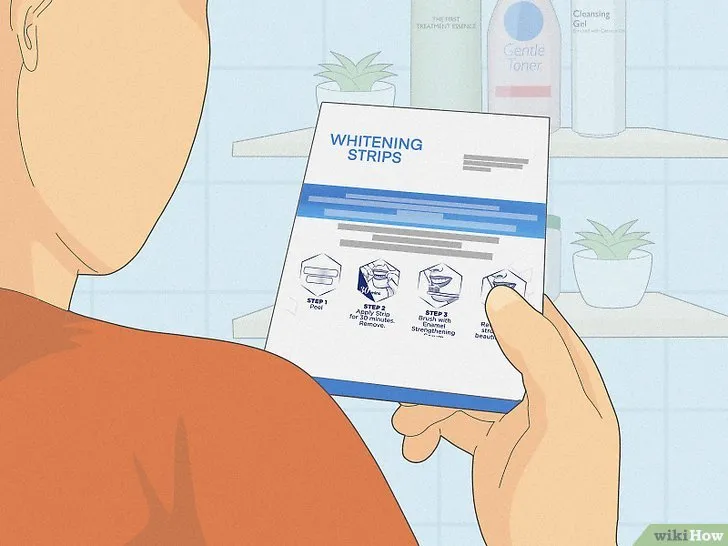
After removing the strips, rinse your mouth thoroughly with water. This helps to remove any remaining whitening agent and debris from your teeth and gums. Avoid using mouthwash immediately after removing the strips, as it might irritate your gums or increase sensitivity. Gently rinsing with water is usually sufficient to clean your mouth. Ensure no whitening agent remains in your mouth.
Post-Treatment Sensitivity
It is common to experience some sensitivity after using teeth whitening strips. This usually subsides within a few days. Avoid extremely hot or cold foods and drinks to minimize discomfort. If sensitivity persists, consult your dentist. Using a toothpaste designed for sensitive teeth can also provide relief. Be patient and give your teeth time to adjust to the whitening treatment. If the sensitivity is severe, it’s advisable to reduce the frequency of treatments or switch to a less potent product.
Tips for Optimal Results
Achieving the best results with teeth whitening strips involves more than just applying them correctly. It includes adopting specific practices to maximize the whitening effect and maintain your brighter smile. Understanding how to maintain your results is essential for long-term oral health. Following these guidelines can help ensure you get the most out of your teeth whitening treatment.
Maintaining a Bright Smile
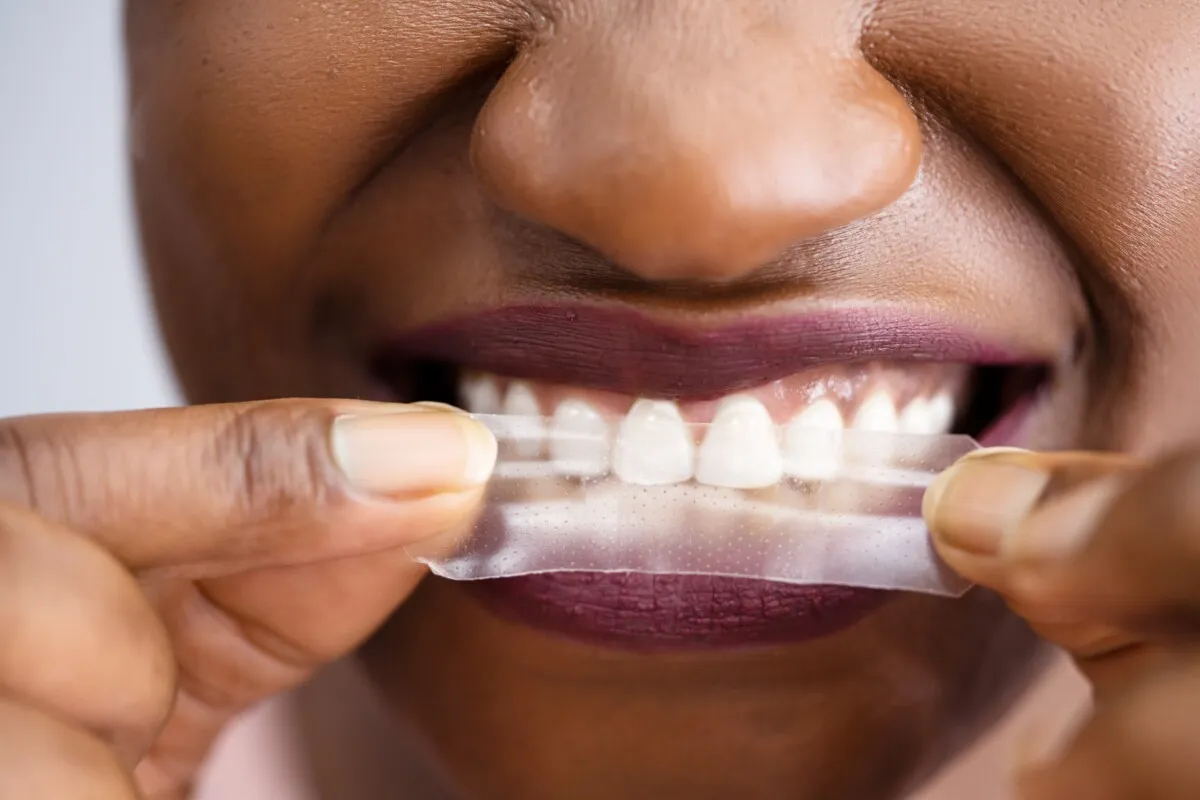
After completing your teeth whitening treatment, maintain your results by practicing good oral hygiene. Brush your teeth twice a day with fluoride toothpaste. Floss daily to remove plaque and food particles. Regular dental checkups and cleanings are also crucial. Avoid smoking and excessive consumption of staining foods and beverages, like coffee and tea, to prevent new stains from forming. Consider using a whitening toothpaste or mouthwash to maintain your smile. Good oral care and a healthy lifestyle are essential for a lasting bright smile.
Dietary Considerations
Certain foods and drinks can stain your teeth, reducing the effectiveness of teeth whitening. To maintain your bright smile, limit your intake of staining agents like coffee, tea, red wine, and dark-colored berries. Avoid smoking, as nicotine can stain teeth. Incorporate tooth-friendly foods into your diet, such as crunchy fruits and vegetables, which help clean your teeth naturally. Drinking plenty of water can also help to wash away staining particles. Being mindful of your dietary choices significantly impacts the longevity of your whitening results. Try to balance your diet with plenty of foods that support oral health.
Oral Hygiene Practices
Maintaining excellent oral hygiene is critical for preserving your newly whitened teeth. Brush your teeth at least twice a day, using fluoride toothpaste. Floss daily to remove plaque and food particles from between your teeth. Consider using an antibacterial mouthwash to reduce bacteria and further protect your teeth. Schedule regular dental checkups and professional cleanings to maintain your oral health. Proper oral hygiene is fundamental for preventing stains and ensuring your smile remains bright and healthy. This is also vital for preventing cavities and gum disease.
Potential Side Effects and Solutions

While teeth whitening strips are generally safe, side effects can occur. Being aware of these potential issues and knowing how to address them is crucial for a positive experience. The most common side effects include tooth sensitivity and gum irritation. Understanding the underlying causes and implementing appropriate solutions can help minimize or prevent discomfort.
Sensitivity
Tooth sensitivity is a common side effect of teeth whitening. This is because the whitening agent can penetrate the enamel, temporarily irritating the nerves in your teeth. To manage sensitivity, use a toothpaste designed for sensitive teeth, which contains ingredients to soothe the nerves. Avoid extremely hot or cold foods and drinks during the treatment and for a few days afterward. If the sensitivity is severe, consider reducing the frequency of treatments or consulting your dentist. Sensitivity usually subsides within a few days after stopping the whitening treatment.
Gum Irritation
Gum irritation can occur if the whitening agent comes into contact with your gums. Symptoms may include redness, swelling, or soreness. To prevent gum irritation, ensure that the strips are properly placed and do not overlap the gum line. Avoid using too much of the whitening agent. If you experience gum irritation, rinse your mouth with water, and consider using a mouthwash with anti-inflammatory properties. It is crucial to stop using the strips if irritation becomes severe and consult your dentist. Proper application and care can significantly reduce the risk of irritation.
When to Consult a Dentist
While teeth whitening strips are readily available over-the-counter, it’s important to know when to seek professional dental advice. If you experience severe sensitivity, persistent gum irritation, or any other unusual symptoms, consult your dentist immediately. Your dentist can evaluate your oral health, identify the underlying cause of your symptoms, and recommend appropriate treatment. Additionally, if you are not seeing the desired results from using whitening strips, your dentist may suggest alternative treatments, such as professional teeth whitening or other cosmetic dental procedures. Regular dental checkups are essential for maintaining optimal oral health and ensuring that your teeth whitening efforts are safe and effective.
In conclusion, understanding how to apply teeth whitening strips for a brighter smile is a straightforward process when following the proper guidelines. From choosing the right product to ensuring correct application and aftercare, the key is to adhere to the instructions carefully and monitor your teeth for any adverse reactions. By following these steps, you can safely and effectively achieve a brighter, more confident smile. Remember that consistency in oral hygiene and maintenance is crucial for sustaining the results. If you have any concerns or experience any unusual symptoms, consult your dentist for personalized guidance.
